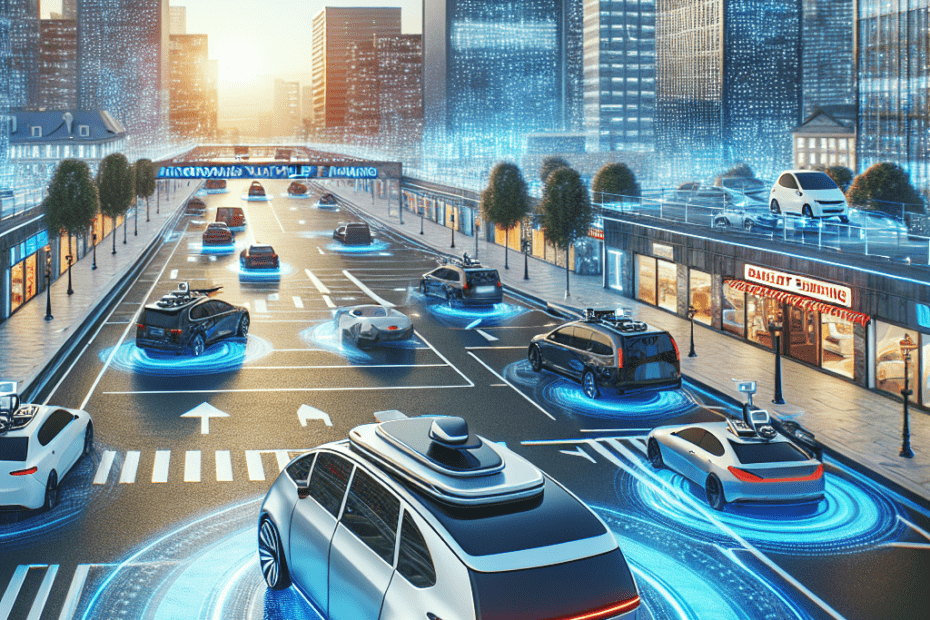“`html
Introduction
In today’s rapidly advancing technological landscape, autonomous innovations are reshaping the way they navigate everyday tasks. Among these breakthroughs is the development of self-parking car systems, promising to transform the mundane task of parking. As they engineer vehicles to become more intelligent and intuitive, the reinvention of parking elevates their driving experience into one of luxury and ease.
Understanding Self-Parking Car Systems
Self-parking car systems, often referred to as autonomous valet parking, enable vehicles to take over the task of maneuvering into parking spaces. Employing a combination of cameras, sensors, and advanced algorithms, these technologies assess a vehicle’s surroundings, calculate the ideal path, and execute the parking process with minimal to no human intervention.
The allure of self-parking systems is compelling, offering enhanced convenience and safety. According to a study by Acme Automotive Research, 65% of drivers report feeling anxious when parking in tight spaces, suggesting that self-parking technology could alleviate a common source of stress.
Benefits of Autonomous Valet Parking
With the rise of urban environments and increasingly congested parking spaces, the benefits of autonomous valet parking become more apparent. Some of the notable advantages include:
- Time Saving: Drivers no longer need to expend time finding and maneuvering into parking spaces.
- Enhanced Safety: Sensors reduce the probability of fender benders and other parking-related mishaps.
- Increased Accessibility: Individuals with mobility challenges gain improved access to tight parking spaces.
Key Components of Self-Parking Technology
Self-parking car systems rely on a suite of technologies working in harmony:
| Component | Description |
|---|---|
| Sensors | Detects obstacles and calculates the optimal path. |
| Cameras | Offers a visual understanding of the surroundings. |
| Algorithms | Processes data to navigate and park the car safely. |
Challenges and Considerations
Despite their promise, self-parking systems face challenges. Weather conditions, such as heavy snow or rain, can obstruct sensors and cameras, making autonomous operation less reliable. Moreover, there is a learning curve for new users to get accustomed to trusting the technology.
Current Market and Future Trends
The market for self-parking car systems is poised for growth. Self-Parking Future reports that the adoption rate of these systems is projected to climb by 28% annually over the next five years. Automotive giants like Tesla, BMW, and Ford invest heavily in developing and refining these technologies, indicating their widespread applicability in the near future.
Future trends may include the integration of artificial intelligence to enhance decision-making capabilities and efficiencies. By leveraging AI, self-parking cars could further optimize space utilization, navigating complex environments with greater ease.
Key Takeaways
- Self-parking car systems offer a convenient solution to parking challenges, particularly in urban settings.
- These systems leverage a synergy of sensors, cameras, and algorithms to execute parking tasks autonomously.
- Market adoption is on the rise, driven by major automotive manufacturers investing in the technology.
- Challenges remain, particularly with adverse weather conditions and technology trust adaptation.
FAQ
1. How does a self-parking car system work?
The system uses cameras, sensors, and algorithms to detect a suitable parking space and automatically guide the vehicle into it.
2. Are self-parking systems available in all car models?
No, self-parking systems are primarily available in mid to high-end vehicle models but are expanding to more models over time.
3. Can self-parking cars handle any parking situation?
They are designed for typical parking scenarios, but extreme weather or irregular spaces may challenge their functionality.
4. Is it safe to rely entirely on self-parking systems?
While systems are generally reliable, it’s crucial for drivers to remain attentive and intervene if necessary.
5. What happens if a malfunction occurs while parking?
If a system malfunction is detected, the vehicle will alert the driver to take manual control or prevent further movement.
“`
This HTML-formatted blog post covers various aspects of autonomous valet parking, highlighting benefits, challenges, market trends, and addressing common questions.
